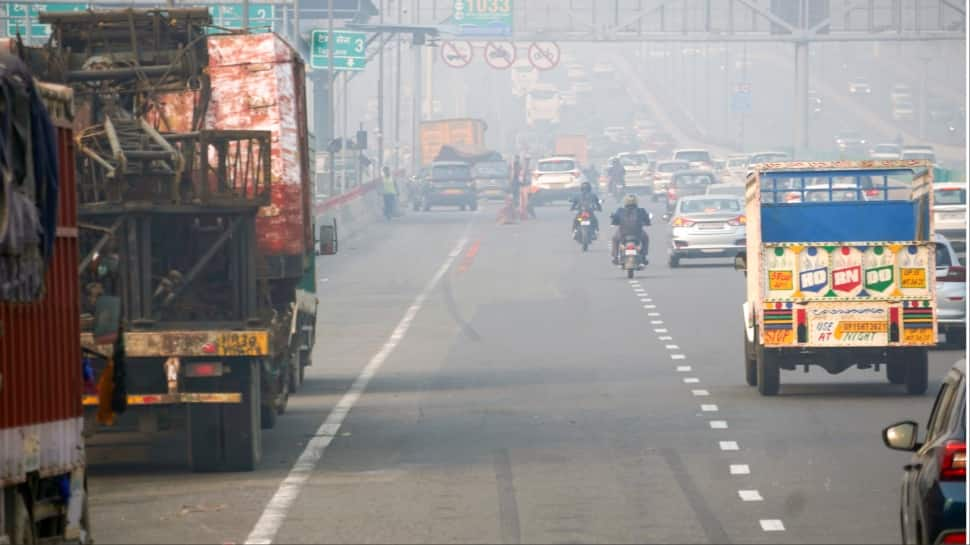Key Takeaways
- PM2.5 levels hit 488 μg/m³ post-Diwali, the highest in 5 years
- 75% of Delhi-NCR households report pollution-related health issues
- Anand Vihar records ‘severe’ AQI of 412 as artificial rain planned
Delhi-NCR’s air pollution crisis has escalated to severe levels, with PM2.5 concentrations reaching their highest point in five years following Diwali celebrations. Three out of four residents are now experiencing significant health problems due to the toxic air quality.
Record Pollution Levels Post-Diwali
Central Pollution Control Board data reveals alarming numbers: PM2.5 levels peaked at 488 micrograms per cubic meter after firecrackers were permitted during Diwali. This represents a more than three-fold increase from pre-Diwali levels of 156.6 μg/m³ and marks the worst air quality recorded in half a decade.
Widespread Health Impact Across NCR
A comprehensive LocalCircles survey covering 44,000 residents across Delhi, Gurugram, Noida, Faridabad, and Ghaziabad paints a grim health picture:
- 42% of households report sore throats or persistent coughing
- 25% experience burning eyes, headaches, or sleep disruption
- 17% face breathing difficulties or aggravated asthma symptoms
Current Air Quality Situation
Despite a 77.5% reduction in stubble burning from Punjab and Haryana, Delhi’s air remains dangerously polluted. Multiple areas recorded AQI levels exceeding 400 – approximately 24 times higher than WHO safety limits.
Recent CPCB readings show Anand Vihar at 412 (severe), Bawana at 336 (very poor), with Delhi’s overall AQI at 261 (poor). The capital continues to battle widespread pollution across all monitoring stations.
Government Response and Measures
Authorities have activated Stage 2 of the Graded Response Action Plan (GRAP) across Delhi-NCR. Emergency measures include:
- Deployment of water sprinklers on major roads like Janpath
- Cloud seeding operations planned between October 28-30
- Artificial rain initiatives to combat particulate matter
Chief Minister Rekha Gupta emphasized that cloud seeding has become essential for the capital’s survival.
Medical Experts Sound Alarm
Healthcare professionals warn that the pollution surge poses serious risks, especially for vulnerable groups. Former AIIMS director Dr. Randeep Guleria explained that pollutants are causing airway inflammation even in healthy individuals, resulting in:
- Nasal congestion and throat pain
- Chest tightness and persistent coughing
- Worsened respiratory conditions
Dr. Guleria noted that even ‘green’ firecrackers have aggravated the situation, urging residents to limit outdoor exposure and use protective masks.
Public Response and Precautions
The LocalCircles survey indicates growing public concern, with 44% of households reducing outdoor activities and boosting immunity through diet. Approximately 30% have sought or plan to seek medical attention for pollution-related health issues.




